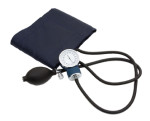Living Longer, Healthier, but Trouble Ahead
Posted on September 30, 2013 by bob in NewsUCanUse
Americans Living Longer, Healthier, But Troubling Trends Emerge
Due to medical advances, better treatments and new drugs unavailable a generation ago, the average American born today can expect to live 3.8 years longer than a person born two decades ago. But are these extra years active and healthy?
Data from researchers at the U. of Massachusetts Medical School show Americans are living longer, reporting fewer symptoms of disease, have more energy, and show fewer impairment in everyday tasks such as walking than a generation ago. According to the study, a 25-year-old person today can expect to live 6 percent or 2.4 quality years longer than their 1987 counterpart.
Meanwhile, a 65-year-old person will gain 1.7 quality years, a 14 percent increase from a generation ago.
Thanks to improvements in health care, many conditions are far more treatable today than 25 years ago. Heart disease, for instance, was potentially much more debilitating a generation ago and patients often suffered a decline in quality of life as a result. It’s far less likely today that a patient recovering from a heart attack will become institutionalized or need around-the-clock care as they once did.
The study also found health gains made as a result of smoking cessation programs were being off-set, in part, by increases in obesity. Americans today are also more likely to see quality of life declines related to chronic, degenerative diseases such as Alzheimer’s and dementia, while younger Americans appear to be experiencing problems related to a sedentary lifestyle.
Other troubling trends were identified, including an increase in anxiety among young and middle-aged people beginning in 2001, and problems with walking increasing significantly among non-elderly over the last decade.
Experts and Public Disagree On Medicare Cuts
Many experts see Medicare as a major contributor to the federal budget deficit, but only 31% of the public agrees. One reason is that many Americans believe most Medicare recipients pay, or have prepaid, the cost of their health care. However, on average, Medicare beneficiaries pay about $1 for every $3 in benefits they receive.
Two-thirds of the public believe Medicare recipients get benefits worth the same or less than what they paid in payroll taxes during their working lives, and in premiums for their current coverage.
–New England Journal of Medicine, from material provided by Harvard School of Public Health
Carpel Tunnel Exercises
The carpal tunnel is a narrow passageway formed by bones and ligaments, though which the median nerve enters the hand. If tendons in the carpal tunnel become inflamed and swell, compressing the median nerve, pain, tingling and numbness in the hand and wrist may result. Here are two easy exercises to keep wrists flexible and ease strain on tired wrists. Do not do these exercises if you already have pain or numbness. In this case, consult your health professional.
— Grasp the fingers of one hand with the other hand and gently bend back your wrist. Hold for five seconds. Gently pull your thumb down and back until you feel the stretch. Hold for five seconds. Clench your fist tightly, then release, fanning out your fingers. Repeat five times. Then do the same exercises with the other hand.
— Stand or sit with your elbows close to your waist, your forearms extended in front of you parallel to the floor, with palms down. Make fists with both hands and make circles with your fists in one direction. Repeat 10 times, and then reverse the direction. Next, open your hands, extend your fingers and repeat the entire sequence.
– Johns Hopkins Health Alert, Sept. 2013
 Revised Diabetes Guidelines
Revised Diabetes Guidelines
The American Diabetes Association (ADA) is easing blood pressure guidelines for diabetics. Previous recommendations were a blood pressure goal of less than 130/80 mm Hg. Citing new evidence, they now say it’s OK to aim for less than 140/80 mm Hg, as recent studies haven’t shown the lower readings offer benefit over the higher numbers. The new target may allow some diabetics to stop taking blood pressure medications to avoid side effects, as long as their systolic pressure remains below 140 mm Hg.
– From Diabetes Care









